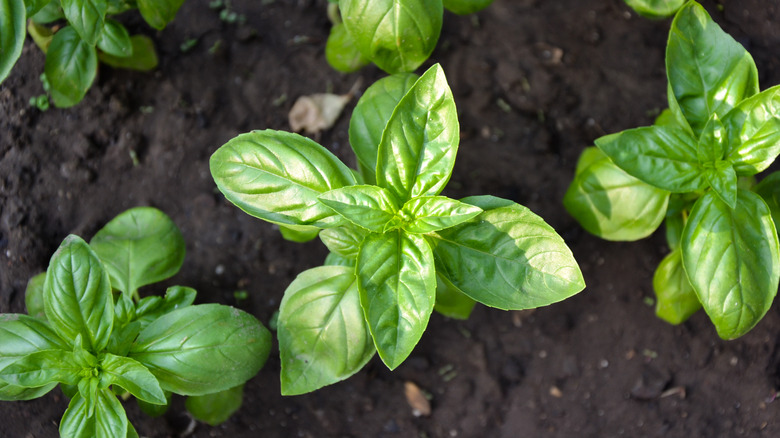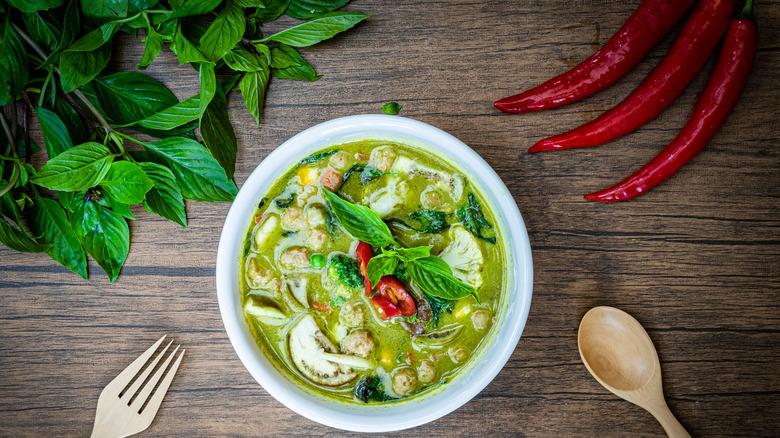The Flavor Difference Between Thai Basil And Sweet Basil
Some nights, you might be left craving a bowl of gemelli pasta with bright green pesto, only to find your fridge devoid of fresh herbs. If you're not managing your own at-home herb garden, the only way to fulfill your craving would be to take a quick trip to the store. But if you don't know the difference between Thai basil and sweet, you could end up perplexed — making your swift trip to the store and your bowl of pesto pasta much further from reality.
When deciding between Thai basil and sweet, there's more to consider than just the herb's name. Fortunately, the two are usually clearly labeled. They also look quite different; Thai basil leaves tend to be smaller with a sturdy texture similar to mint, while sweet basil leaves are large and soft.
But if you consider substituting one for the other, this may propose a stickier situation. While they may both technically be basil, their flavors are vastly different.
Thai basil has a spicier aroma, while sweet basil is herbal and citrusy
Besides how they look and feel, the most important difference between Thai basil and sweet is flavor. Next time you're at the store, give them each a little sniff. You'll notice that sweet basil has a much more herbal smell that's both sweet and citrusy. Thai basil, on the other hand, has an ever so slightly spicy aroma comparable to licorice. As 80% to 90% of what you perceive as taste can depend on your sense of smell, you can expect the aromatic differences to translate to how they taste. Of course, this will also influence how you cook with them.
Originating in Southeast Asia, Thai basil has a flavor that's often compared to anise, also called aniseed, a spice made from the seeds of the anise plant. Its flavors mimic its aromas, with hints of licorice and spice that pop in many meals. As you can probably guess by its name, Thai basil is best used in Southeast Asian and Thai dishes, such as spring rolls, green curry, drunken noodles, and stir-fries. On the other hand, sweet basil is used in Italian dishes, including pesto pasta, margherita pizza, and more.
If it comes down to it, you can substitute sweet basil in your Thai dishes, but you won't get that same punch of flavor. Generally, however, you won't want to replace sweet basil with Thai in your Italian meals as the flavors don't tend to complement one another.

